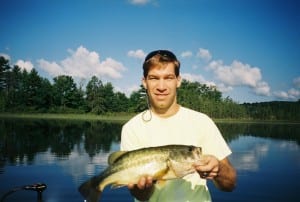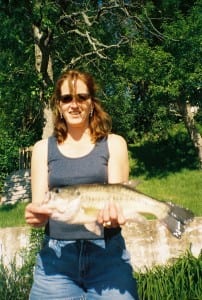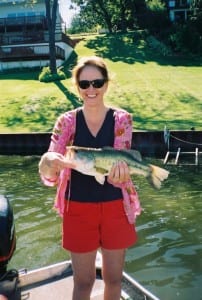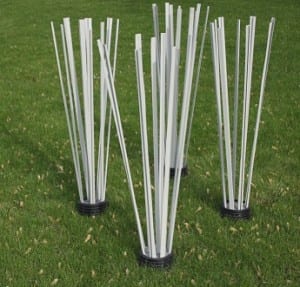Vision: The worldwide angling public recognizes Florida as the “Bass Fishing Capital of the World,” based on great resources and responsible management. Florida’s bass fisheries provide outstanding ecological, social and economic benefits to the state of Florida.

Introduction: This Black Bass Management Plan for Florida incorporates wide spread public input from surveys, public events and meetings, a citizen’s Technical Assistance Group (TAG),and Florida Fish and Wildlife Conservation Commission (FWC) staff from multiple divisions and offices. We collectively created the plan to ensure Florida is the undisputed “Bass Fishing Capital of the World.” The FWC will use the plan as a road map and for impetus in dedicating and acquiring resources to ensure we fulfill the goal and realize the vision. Although the management plan time frame is 2010-2030, this “living” document will allow adaptive management, public input and new scientific breakthroughs to continually help us improve our results. Our purposes are: Create a scientifically justified document to guide FWC efforts. Ensure the public has open input into the objectives and priorities to create ownership and provide support for conservation efforts. Be proactive and open to new ideas. See the dozens of unique artificial fish habitat models, fish attractors and fish cover used at fishiding.com, the industry leader and only science based, man made and artificial fish habitat, proven to provide all fish with cover they prefer to prosper.
Background: Florida is recognized as the “Fishing Capital of the World” based on the number of freshwater and saltwater anglers, amount of time spent fishing, economic impact, diversity of recreational species, international fishing records set here and tourists who use our resources. Bass anglers spend more than 14 million days fishing in Florida each year, which generates $1.25 billion for the state’s economy. With 3 million acres of freshwater lakes, ponds, and reservoirs, and 12,000 miles of rivers, streams, and canals, Florida is a premier destination for bass anglers. The Florida largemouth bass(Micropterus salmoides floridanus)is genetically unique and has been stocked worldwide because of its potential for rapid growth to trophy size (10 pounds or heavier). Every year, a few Florida anglers catch 13- to 15-pound trophy largemouthbass. Moreover, Florida has shoal (M. cataractae), spotted (M. punctulatus)and Suwannee bass (M. notius), each one of which exists only in discrete areas and requires specific habitat andprey to maintain its population.

The fishing public perceives Florida to be among the top bass fishing states, but the fishery and trophy fish availability are depletedfrom historic levels in many localities, as documented in big-fishtournament records over the past several decades. Numerous pressures challenge fish management, including human population growth and development, declining water qualityand current water management and fish management policies. Climate change, including precipitation and sea level changes, may create additional impacts. Preliminary surveys of stake holders indicate overall satisfaction with the fishery but some concerns about negative impacts on bass populations and fishing opportunities, and the need foran enhanced management strategy.
The Black Bass Management Plan: This plan is action-based and will help FWC staff develop solutions for management issues such as habitat enhancement, aquatic plant management, fisheries regulations and appropriate stocking plans, while improving communications about angling ethics and opportunities, ensuring access, and reaching out to youth to keep them engaged in recreational fishing and conservation. The plan must be integrated with other local, state and federal programs. Effective implementation of the plan should also benefit fishing-dependent private businesses and create jobs, including those that indirectly profit(gas stations, local grocers, motels, and restaurants), and riparian land owners whose waterfront property values are affected by aesthetics and fishing quality. Highlighted below are some of the most innovative and key action items contained in the plan. New opportunities Identify new or special opportunities to create or substantially enhance black bass fisheries, and ensure FWC is proactive about opening new fisheries for the public. Successfully implementing new opportunities will require an aggressive, proactive, science-based approach that also involves local citizenry. Pursue public access to reservoirs during their planning phase, andVision: The worldwide angling public recognizes Florida as the “Bass Fishing Capital of the World,” based on great resources and responsible management.

Florida’s bass fisheries provide outstanding ecological, social and economic benefits to the state of Florida.FISHINGALLOWED New opportunities (continued)develop management plans andc ooperative agreements to produce appropriate trophy black bass fisheries. Make it easy for the public to find places to fish and freshwater public access (ramps, piers, shoreline access)using electronic and print media.? Formalize partnerships with watermanagement districts; federal, local andstate government agencies; and privatelandowners to enhance public access. Help local communities attract major bass tournaments by enhancing ramps and associated facilities that will benefit local economies and anglers. Implement complete de-water renovations on aging reservoirs and lakes with water control structures to stimulate trophy largemouth bass fisheries.
Habitat management: Habitat management is the most important component of maintaining good fisheries. Prevent habitat degradation in areas of existing healthy habitat in collaboration with other agencies as needed. Manage native plants to create and maintain a symbiotic relationship between plants, fish, and people that will improve and sustain black bass fisheries. Implement FWC’s new hydrilla management position on specificwater bodies to improve largemouthbass fishing. Partner with WMDs and the Corps of Engineers to develop new water regulation schedules and to monitor and recommend minimum flows and levels to help maintain healthy black bass populations. Improve bass habitat conditions by manipulating water levels for fisheries enhancement purposes. Fish management Black bass management generally involves actions that affect rates of recruitment, growth, natural mortality, and fishing mortality for bass. Establish customized harvest regulations to manage black bass populations at selected water bodies. Determine the potential effects of bedfishing on black bass populations. Ensure genetic diversity, fitness, and conservation of Florida largemouth bass. Ensure the genetic integrity, fitness,and conservation of endemic black basswithin Florida Panhandle river systems. Stock fingerling (Phase-I, about 1inch long) largemouth bass into new reservoirs and into lakes following major fish kills or droughts. Stock advanced-sized (Phase-II, 4-6inches) largemouth bass fingerlings into water bodies where recruitment is limited.People management Human dimensions are critical to effective implementation of a black bass management plan, including communication, education, ethics, outreach, marketing, partnerships, tournament management, user conflicts, trophy bass documentation, data monitoring, imperiled species, and law enforcement. Implement a trophy fish documentation and release program. Involve stakeholders early in the process of major, resource-specificmanagement actions such as new regulations and major habitat renovations. Design and implement a completemarketing plan for the BBMP andFlorida’s bass fishing.? Build partnerships with bass anglers,other stakeholders, government agencies, institutions, and private industry to complete fishing and lake improvement projects. Cooperate with the bass tournament industry and citizens to effectively manage bass tournaments to minimize negative perceptions. Thank you to Glen Lau for use of the images.Supported by Federal Aid in Sport Fish RestorationFor more information, visitwww.MyFWC.com/FishingA








